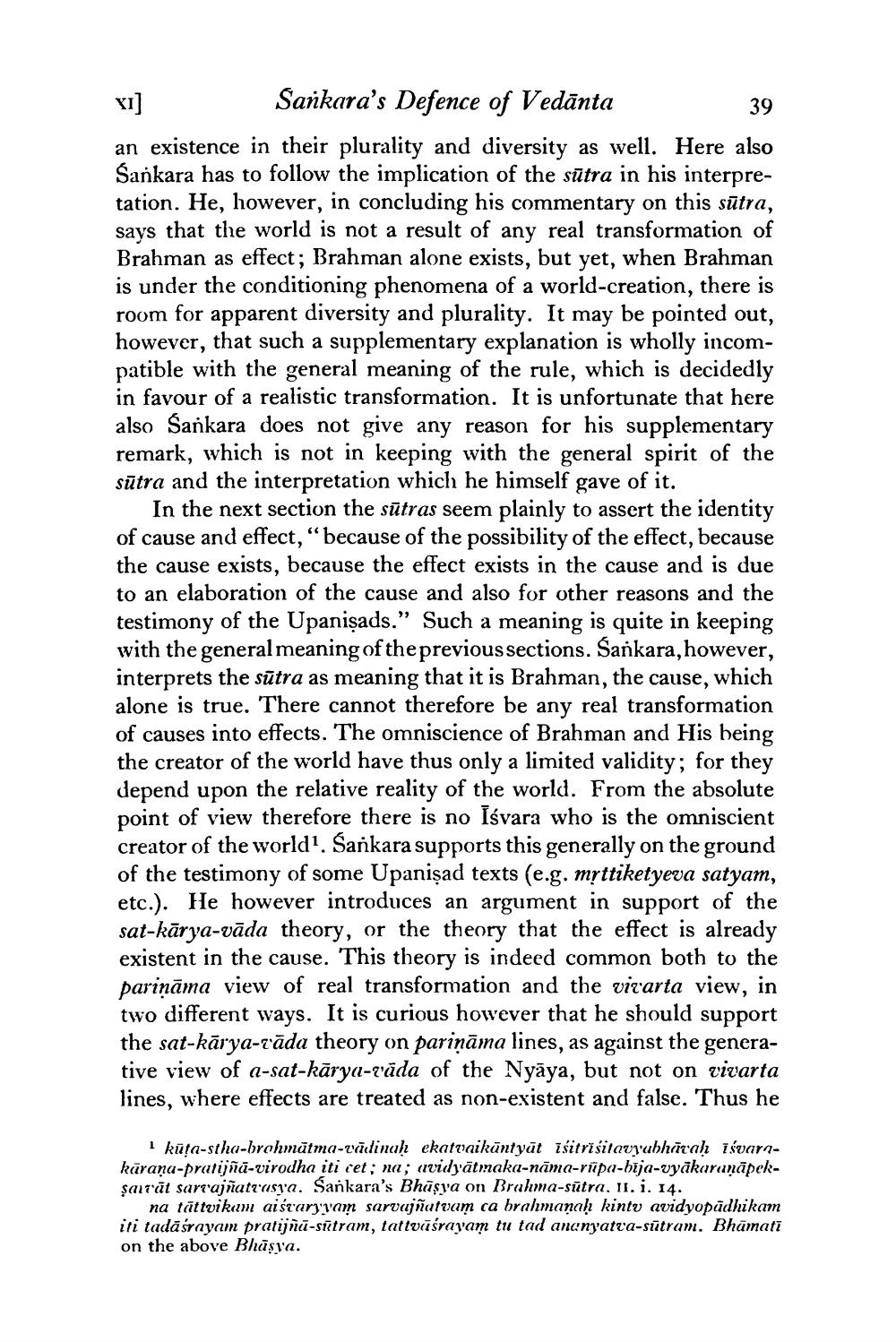________________
39
Sankara's Defence of Vedānta an existence in their plurality and diversity as well. Here also Sankara has to follow the implication of the sūtra in his interpretation. He, however, in concluding his commentary on this sūtra, says that the world is not a result of any real transformation of Brahman as effect; Brahman alone exists, but yet, when Brahman is under the conditioning phenomena of a world-creation, there is room for apparent diversity and plurality. It may be pointed out, however, that such a supplementary explanation is wholly incompatible with the general meaning of the rule, which is decidedly in favour of a realistic transformation. It is unfortunate that here also Sankara does not give any reason for his supplementary remark, which is not in keeping with the general spirit of the sūtra and the interpretation which he himself gave of it.
In the next section the sūtras seem plainly to assert the identity of cause and effect, “because of the possibility of the effect, because the cause exists, because the effect exists in the cause and is due to an elaboration of the cause and also for other reasons and the testimony of the Upanişads.” Such a meaning is quite in keeping with the general meaning of the previous sections. Sankara, however, interprets the sūtra as meaning that it is Brahman, the cause, which alone is true. There cannot therefore be any real transformation of causes into effects. The omniscience of Brahman and His being the creator of the world have thus only a limited validity; for they depend upon the relative reality of the world. From the absolute point of view therefore there is no īśvara who is the omniscient creator of the world'. Sankara supports this generally on the ground of the testimony of some Upanişad texts (e.g. mrttiketyeva satyam, etc.). He however introduces an argument in support of the sat-kārya-vāda theory, or the theory that the effect is already existent in the cause. This theory is indeed common both to the pariņāma view of real transformation and the virarta view, in two different ways. It is curious however that he should support the sat-kārya-rāda theory on pariņāma lines, as against the generative view of a-sat-kārya-vāda of the Nyāya, but not on vivarta lines, where effects are treated as non-existent and false. Thus he
I kūta-stha-brohmātma-vīdinah ekatvaikāntyāt īsitrisitavyubhiivah īśvara. kūrana-pratijñā-virodha iti cet; na; (vidyātmaka-nama-rüpa-bija-vyakaranāpekşaitat sarcajsattusta. Sankara's Bhūsya on Brahma-sūtra. II. i. 14.
na tättvikam aišvary'vam sarvajñatvam ca brahmanah kintu avidyopadhikam iti tadāśrayam pratijnā-satram, tattvasrayam tu tad angnyatva-sūtram. Bhāmati on the above Bhūsya.




